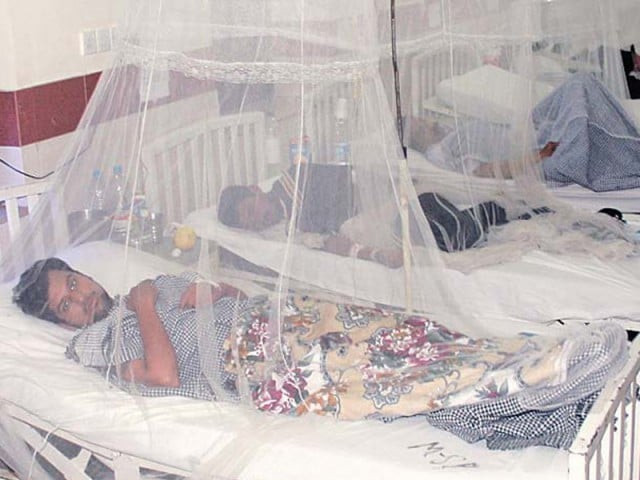Losing its sting? None of 500 suspected dengue cases found positive
Earlier diagnoses in districts based on initial tests only

Earlier diagnoses in districts based on initial tests only. PHOTO: FILE
Solving the conundrum
Although as many as 500 patients were reported from various parts of K-P in 2015 so far, none of them had actually fallen prey to the deadly virus, according to the control programme head.
While talking to The Express Tribune, Khalid said that people with dengue symptoms reach hospitals where an initial diagnostic procedure called the ‘strip test’ is carried out. This test often reveals a positive result for dengue since it is a blood test and more often than not anti-bodies are present in the blood.
According to Khalid, three different strip tests are carried out that include Immunoglobulin G (IgG) the most abundant type of antibody, Immunoglobulin M (IgM) the first antibody to be made by the body to fight a new infection and nonstructural protein 1, also called Platelia Dengue (NS1). He said IgG and IgM were carried out for anti-bodies whereas NS1 was conducted for antigens.
“Often these strip tests show a positive result for dengue since anti-bodies are present in a patient’s bloodstream due to the presence of past infections,” said Khalid. “However, we do not take risks and immediately take blood samples for further laboratory tests,” he added. These blood samples are then sent to National Institute for Health (NIH) in Islamabad. “All the 500 plus cases that emerged these past days have tested negative for dengue by NIH,” stated the doctor.
Precaution is the real cure
Khalid said the K-P dengue control programme was going to focus more on the prevention of the disease rather than its treatment.
“The treatment does not require extraordinary arrangements but precautionary steps can make a huge difference,” he said. “All you need to do to cure the patient is to give them medicine and keep them in isolation so the virus does not spread further,” said Dr Khalid.
“While fumigation is not the best way to prevent the disease since asthma and other breathing problems arise, holding extensive awareness campaigns—particularly after Friday sermons and congregations—is one of the best and surest way to solve the problem.”
Waiting on the cold
He also said that preventive measures in the past have been successful and since mercury will drop down to 15-16 degrees Celsius in the coming week, dengue cases will die down from the region. On August 30, a health department report revealed dengue larvae was present in around 1,246 places of Swat Valley.
On February 4, the K-P government issued Rs400 million to the Integrated Vector Management (IVM) to counter three different diseases including dengue, malaria and leishmaniasis in K-P. According to health department officials, several areas were marked as high-risk regions for these diseases. “These places are the ones where the government had failed to prioritise prevention earlier but now has chalked out a plan to counter the outbreak,” they said.
Confirmed, not confirmed
In 2015, officials from regional hospitals said they have seen 17 cases of dengue from Swat, over 260 from Mansehra, Kohistan, Haripur, Battagram and Abbottabad where three are said to have succumbed to the deadly virus, and 67 from Batkhela. While the staff at district hospitals, Saidu Teaching Hospital Medical and Ayub Teaching Hospital declared the patients to be dengue positive, their results were based on initial strip tests.
Published in The Express Tribune, October 3rd, 2015.













COMMENTS
Comments are moderated and generally will be posted if they are on-topic and not abusive.
For more information, please see our Comments FAQ